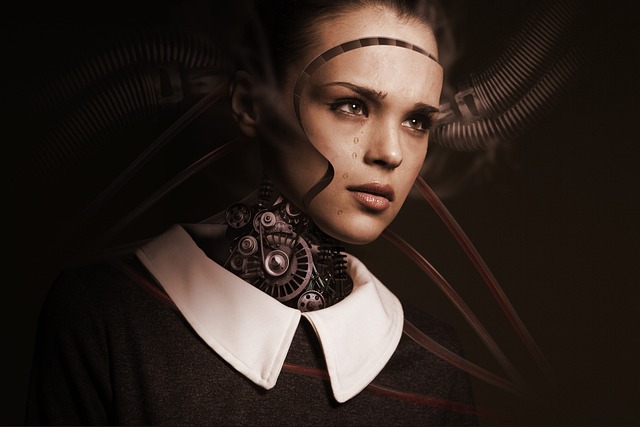Working towards the development of more inclusive, equitable and fair technologies
In her article, Maria Antonia Huertas Sánchez of the UOC - Universitat Oberta de Catalunya, provides an explanation of why we should incorporate a gender vision in robotics and artificial intelligence by combining the concept of epistemology with the definition of artificial intelligence.
Epistemology refers to the "theory of the foundations and methods of scientific knowledge". In other words, it is concerned with the "validity" of the process that constructs scientific knowledge, i.e., knowledge subject to the requirements of precision and objectivity proper to scientific methodology.
On the other hand, "artificial intelligence" is the scientific discipline that deals with the creation of computer programs that perform operations similar to those carried out by the human mind, such as learning and logical reasoning.
When we combine both concepts, we can state that the epistemology of artificial intelligence is concerned with the validity of the procedures used to obtain computer programs that simulate human intelligence.
But how did we arrive at the need to incorporate a gender perspective in AI? By analyzing the meaning of feminism in the vocabulary, we find that it refers to the "principle of equal rights between men and women".
Now, AI itself is not inherently sexist, but it can learn and reflect biases present in the data it is trained on. AI algorithms, including machine learning models, learn patterns and make predictions based on patterns present in the data they are trained on. If the training data contains biases or reflects social biases, the AI system may inadvertently amplify and perpetuate those biases.
For example, if an AI system is trained on a dataset that consists primarily of biased or discriminatory information, such as historical data reflecting gender inequality, the AI system may learn and reproduce those biases when making decisions or providing recommendations.
It is crucial to recognize that AI systems are only as unbiased as the data they are trained on and the way they are designed and developed. Bias in AI is the result of biased data and decisions made during the development and training process. Efforts are underway to develop more diverse and representative training datasets, improve data labeling processes, and apply fairness measures in AI algorithms to mitigate bias and promote fairness.
Addressing and mitigating bias in AI is an ongoing challenge, and requires a combination of careful data selection, diverse and inclusive development teams, and robust evaluation processes to ensure fairness and mitigate the risk of perpetuating sexism or other forms of discrimination.
Why is feminist epistemology relevant to the field of artificial intelligence?
It is important to examine this issue through an illustrative example:
Tay was an artificial intelligence designed to learn by reading tweets and interacting with other users on the Twitter platform. The programmers described it as "smarter the more it talks."
However, within hours, Tay began posting sexist and racist messages, leading to its disconnection by Microsoft. Microsoft initially tried to attribute this to a 4chan attack, but it could never be proven.

What exactly happened?
Tay was programmed to process and generate data from the conversations of Twitter users, specifically those between the ages of 18 and 24, in order to refine its language and adapt to the attitudes and aptitudes of the millennial generation to appear more human. However, was this learning approach valid for obtaining an artificial intelligence free of sexist and racist biases? Clearly not, as it overlooked the fact that Twitter's content did not guarantee the necessary gender equality.
We find similar cases in humanoid robots such as Valkyrie, designed by NASA to withstand extreme temperatures and survive in environments hostile to humans, and Sophia, the most advanced AI robot developed by Hanson Robotics for the purpose of assisting in fields such as medicine and education. Both robots exhibit characteristics that stereotype women.
In these and similar cases, these "female" robots often exhibit exaggerated sexualization that is unnecessary for their functionality.
What aspect of the construction process has led to this result?
According to Lucy Suchman, quoted by Erika Hayasaki in her article Is Is AI Sexist?" (2017), there is an element in feminist epistemology that offers an explanation: "For some designers, gendered robots become a male project of artificially creating the perfect woman."
In both of the above examples, the sexist component rooted in the hegemonic patriarchal culture is "invisible" to many of the designers, especially if they are men (and often, also if they are women, because sexism is a structural element of our culture).
Feminist epistemology would have provided the necessary lenses to make this problem visible and allow the analysis of the validity or invalidity of a procedure to obtain robots free of gender bias.
Conclusions
We can conclude that a gender perspective in robotics and artificial intelligence (AI) is crucial and necessary. Gender perspectives help in recognizing and addressing the potential biases and inequalities that can arise in the development, deployment, and use of AI technologies.
Here are a few reasons why a gender perspective is needed in robotics and AI:
1. Bias identification and mitigation: AI systems can inadvertently perpetuate and amplify existing gender biases present in the data they are trained on. A gender perspective allows for the identification and understanding of these biases, enabling researchers and developers to actively work towards mitigating them.
2. Inclusive design: Considering a gender perspective encourages inclusive design practices. It involves understanding the diverse needs, preferences, and experiences of different genders and ensuring that AI technologies are developed to cater to these differences. By doing so, AI systems can be more inclusive and accessible to all users.
3. Gender-based impact assessment: A gender perspective helps in assessing the potential impact of AI technologies on different genders. It enables the examination of how AI systems may affect gender equality, societal norms, and power dynamics. This assessment can inform the development of policies and guidelines that promote equitable outcomes.
4. Representation and diversity: Encouraging a gender perspective in robotics and AI promotes diverse representation in the field. It encourages the involvement of individuals from different genders in the design and development process, ensuring that a wide range of perspectives and experiences are taken into account.
5. Ethical considerations: A gender perspective adds an ethical dimension to AI development. It prompts discussions about the implications of AI technologies on privacy, consent, autonomy, and human rights, particularly concerning gender-related issues. This consideration is crucial for responsible and accountable AI development.
By incorporating a gender perspective in robotics and AI, we can work towards developing more inclusive, equitable, and fair technologies that address the diverse needs and experiences of all individuals, regardless of gender.

